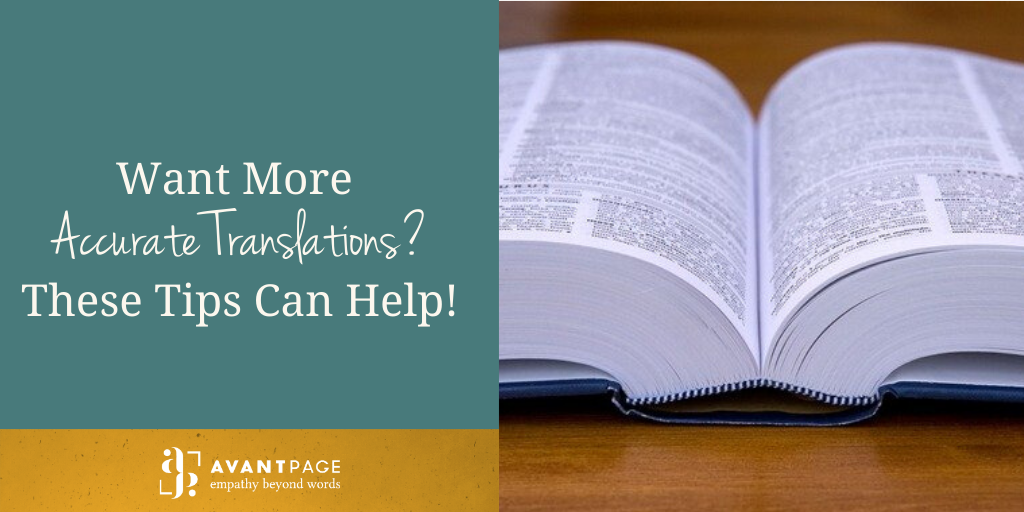There are many moving pieces to your language projects, from the language services your organization needs to the linguists completing your projects. The key to accurate translations is ensuring that all of these moving pieces are working in harmony with each other. Getting these pieces to work together effectively doesn’t have to be challenging, you just need to follow these steps to ensure accurate translations.
How to ensure accurate translations
Identify your target audience and target language
Before you begin the process of translating or localizing your content, you need to know your target audience and what language they speak. If there are different dialects of that language, you should also be sure to know what dialect your audience uses. Once you’ve identified this information, you’ll want to pass it onto your Language Service Provider (LSP) so they can effectively translate your documents. If you don’t have this information, you can work with your LSP to determine the language and dialect used by your target audience.
Complete your source document before sending for translation
Part of ensuring high-quality and accurate translations is knowing that your final file is complete before you send it for translation or localization. When you send an in-progress file to you LSP, the process of translating or localizing your documents will be drawn-out. You’ll need to go back-and-forth with the document and its edits, and having your LSP translate each iteration of the document will make your project lengthier and more expensive.
Openly communicate with your LSP
Keep an active line of communication with your LSP. If you aren’t sure what language service you need, what kind of content would best reach your target audience, or if you have any other questions – your LSP is likely to have the answer. They can help to ensure accurate translations by answering all of your questions, leading you on the path towards the right language projects, and more.
Provide context for your projects
Be sure that your LSP knows the reason why you’re translating the documents you’ve chosen. When you provide context, your LSP can be sure that the documents will meet the needs of your end-user much more effectively. Particularly if you’re submitting similar projects on a consistent basis, having that context can help your LSP to build a template for your translation, decreasing time and money spent on your projects over time.
If you’re interested in starting your next translation project with an LSP who ensures accurate translations, we can help. Call us at 530-750-2040, or request a free quote today.
GET VALUABLE CONTENT DELIVERED STRAIGHT TO YOUR INBOX. SIGN UP FOR OUR NEWSLETTER TODAY!

Ash is the Marketing Coordinator at Avantpage, Inc. Ash works to create high-value, targeted content that allows consumers to connect with us at Avantpage. They are a strong proponent of everyone having equal access to communication and information. They have written and created content for a variety of online platforms, and have been published in over 30 online platforms with varying topics. But Ash is other things too! An avid athlete, Ash enjoys spending their free time rock climbing, partaking in aerial circus sports, and practicing acroyoga.
